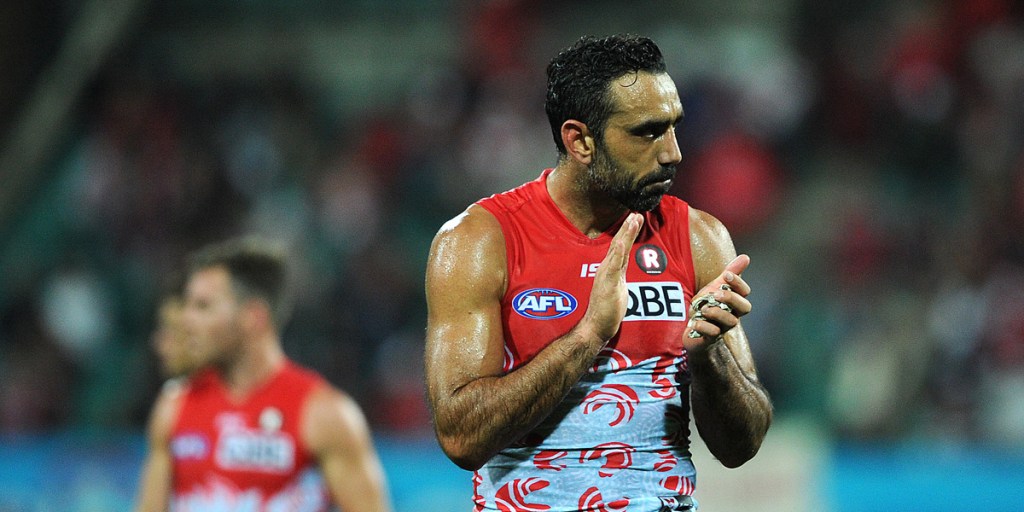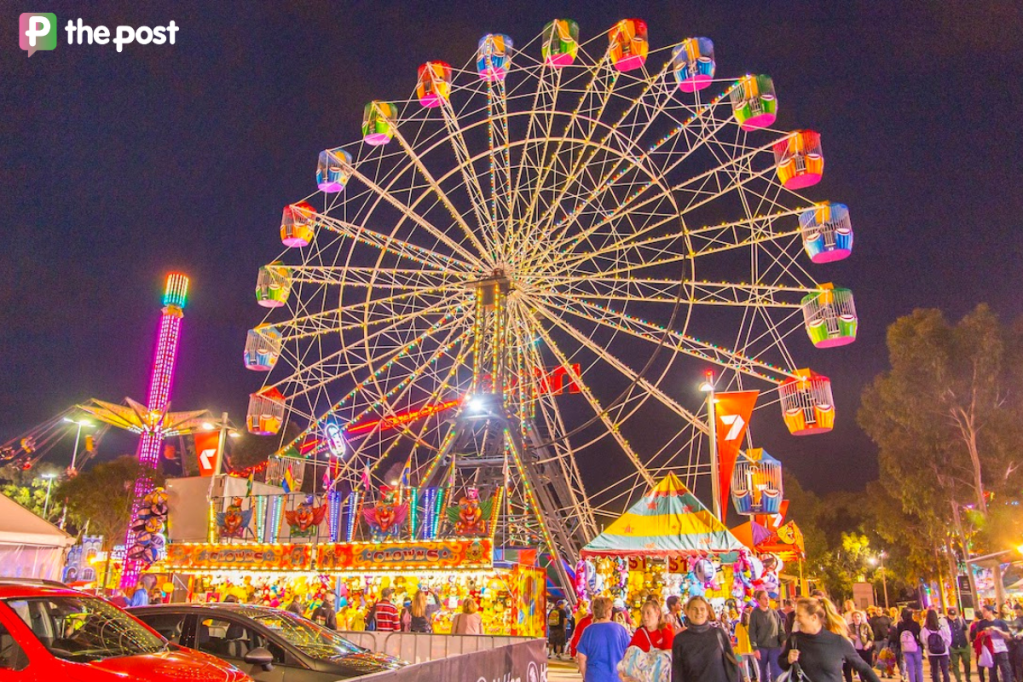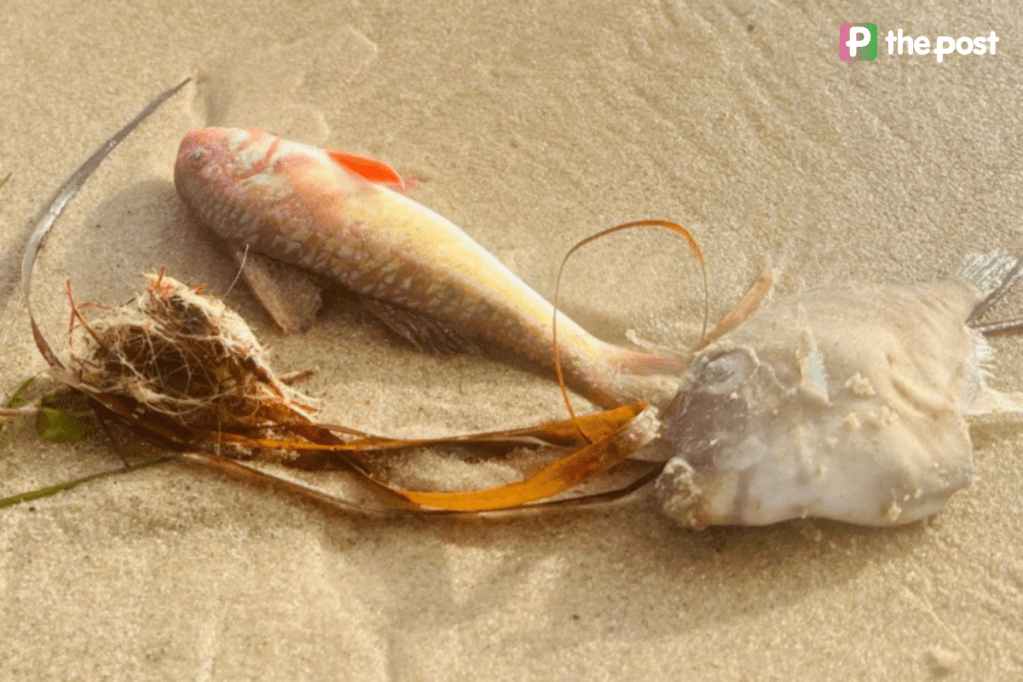Goodes spears an Australian flaw

The reaction to Adam Goodes’ “war dance” during an AFL match on Friday night is nothing new in Australian history.
As a nation, we’ve made it a habit to be offended by prominent Aboriginal people who express pride in their culture and confidence in their identity.
Back in 1994, up and coming athlete Cathy Freeman wrapped herself in the Aboriginal flag after winning gold in the 400m at the Commonwealth Games in Canada. Team leader Arthur Tunstall, who subsequently developed a vile line in Aboriginal jokes, dressed her down – as did much of the press back home. Freeman didn’t care, repeating her act of defiance after winning the 200m.
Six years later, and Freeman provided two of the highlights of the 2000 Sydney Olympic Games, lighting the Olympic flame and then winning the 400m final in fine style.
Freeman, to the ecstatic cheers of thousands in the stadium and watching at home, completed a lap of honour, wrapped in both the national and Aboriginal flags.
The upstart whose show of pride in 1994 had been derided for being “divisive”, had been transformed into “our Cathy”. She had become one of the most potent symbols of reconciliation in Australian history. Yet, in 1994 and 2000, her actions were virtually identical.
You might like
It’s not only in the realm of sport that Australians tend to lose the plot when confronted with an assertion of Aboriginal pride or, heaven forbid, Aboriginal rights.
The Mabo decision of the High Court in 1992, which recognised the concept of “native title” over land, unleashed some very ugly undercurrents in Australian society.
The decision overturned the concept of terra nullius – the convenient legal fiction that Australia had been vacant land at the time of colonisation.
The idea of Aboriginal and Torres Strait Islander people actually existing and having real and continuing rights to the lands possessed by their ancestors was an affront to many Australians.
The very prominent businessman Henry Bosch was forced to resign from a government advisory position after the Mabo decision inspired him to describe Aboriginal people as “stone age” and “the most backward 1 per cent of the population”.
He wasn’t alone in expressing such brutal sentiments.
Stay informed, daily
Goodes is living and playing in a different era, thankfully, but the reaction to Friday night’s display shows that many Australians are still uncomfortable with Aboriginal people expressing their identity.
As it happened, while Goodes was playing on Friday night, I was at a small reconciliation gathering at Mt Barker in the Adelaide Hills.
It was a gentle affair, held in a marquee in a local park. Two Aboriginal musicians – Ellie Lovegrove and Nancy Bates – sang songs, and members of the Peramangk community offered a welcome to country.
There was wry humour on offer, as there always is as these gatherings, but also expressions of vulnerability and more than a few tears.
A local Aboriginal health worker talked about her upbringing and her eventual embrace of her cultural identity.
It’s a harsh reality that many Aboriginal people have difficulty putting together all the pieces of their past, due to the history of forced displacement of indigenous Australians, not to mention the well-documented decades of the stolen generations.
Nevertheless, here she was, telling us what she did know about her ancestors and gently asking to connect with others who wanted to discover more of who they are and where they come from.
The reality is that Aboriginal people are incredibly generous in the reconciliation process, being prepared to share who they are and, many times, make themselves vulnerable in the interests of creating greater understanding.
In his own way, Goodes has done the same (the man danced on a football field). The reaction in many quarters shows this to be true.
The question is: why are so many of us so threatened?
David Washington is editor of InDaily.








